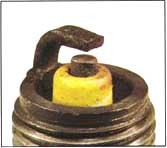I work part-time doing grounds and building maintenance at the local flight school. We have 34 aircraft that use 100LL aviation fuel. We just had to repair one of our 1 year old Ariens snowblowers due to the 87 Octane unleaded deteriorating over the 3 off seasons - despite using Stabil. The question is can we use the 100LL instead of 87 ? all the fuels in SW Ontario, maybe all of Canada, are now using ethanol which causes so many issues.
No Cats on the lawnmowers or the snowblowers, so other than a possible lead film on the sparkplugs will we see anything to worry about?
No Cats on the lawnmowers or the snowblowers, so other than a possible lead film on the sparkplugs will we see anything to worry about?

